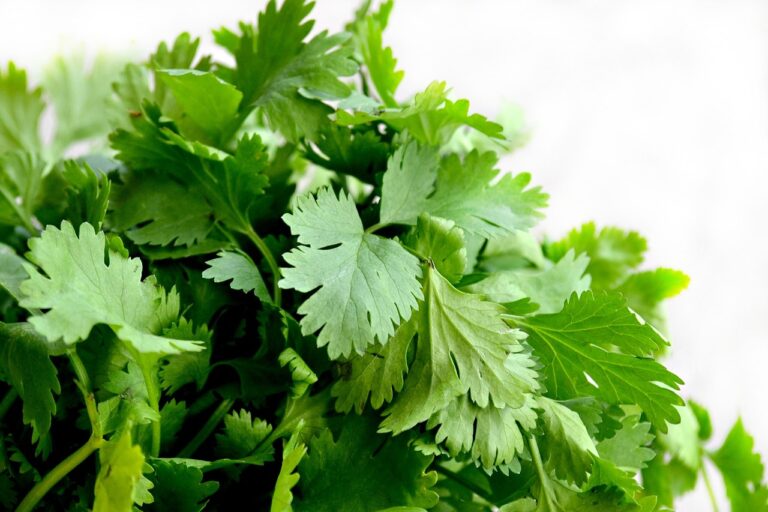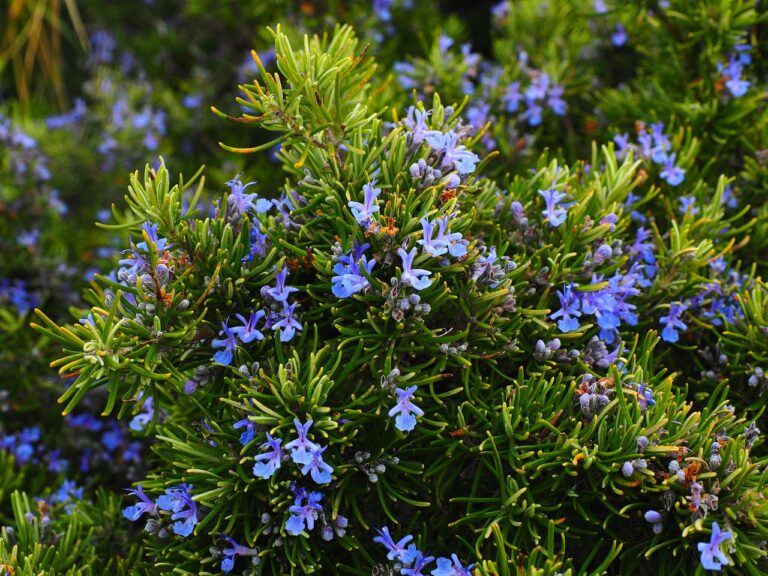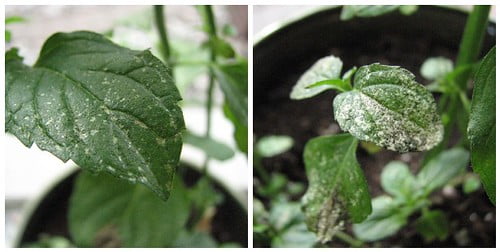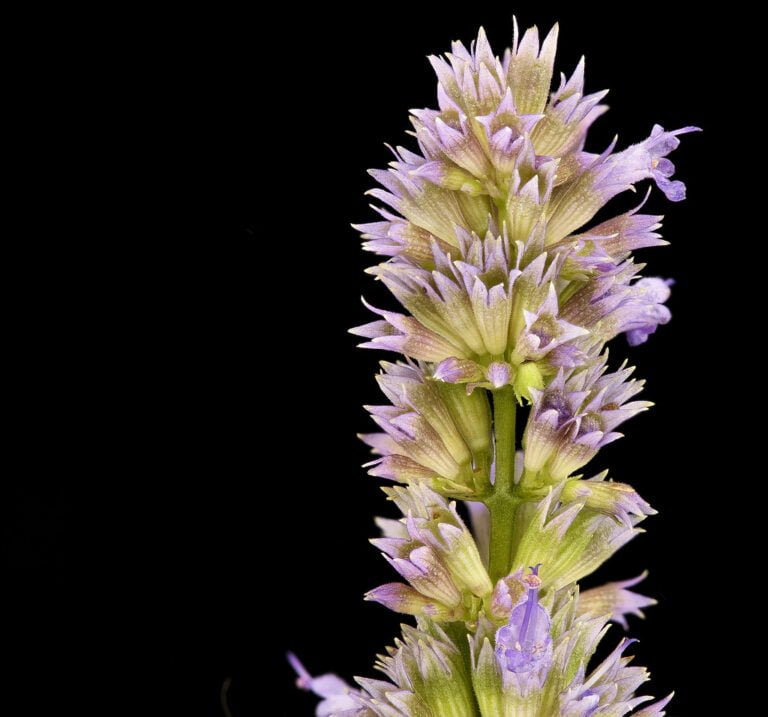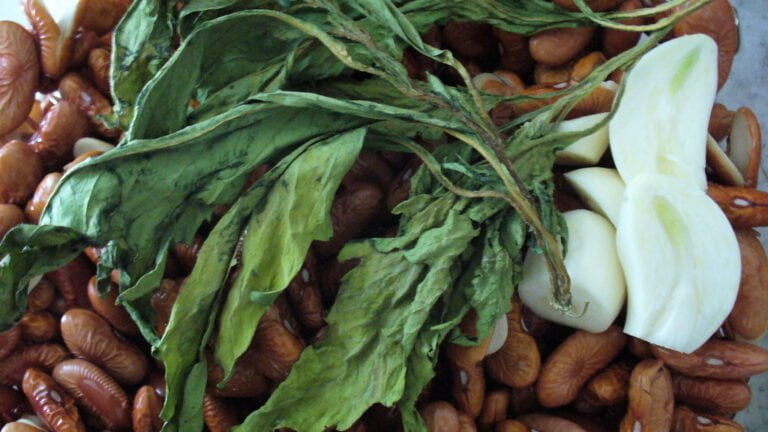Lemon Verbena
To help your Lemon Verbena flourish, give it 6 to 8 hours of sun daily in well-drained soil. Maintain it in full sunlight for best growth. It’s crucial to water regularly and fertilize to keep it healthy. Harvest when 10 inches tall, and dry leaves for culinary magic. Prune in spring to promote bushier growth. Watch out for spider mites and whiteflies; maintain proper humidity levels. Always consider using companion plants for pest control. Proper sunlight exposure boosts flavor and overall plant health. For further information on care and uses, there is a wealth of knowledge available in the provided research.
Growing Conditions for Lemon Verbena
When cultivating Lemon Verbena, ensuring it receives sufficient sunlight, specifically 6 to 8 hours daily, is crucial for its robust growth and development. This herb thrives in full sun, making it essential to plant it in a location where it can bask in the sun’s rays for the majority of the day. Lemon verbena also requires well-drained soil to prevent waterlogging, which can lead to root rot. It is advisable to plant it in soil that is rich in organic matter and has good drainage properties to support its growth adequately.
In terms of climate suitability, Lemon Verbena is best suited for Hardiness Zones 8-11, making it an excellent choice for regions with warmer climates. Regular watering is vital for this herb, especially during hot weather, to prevent stress and ensure its overall health. Additionally, fertilizing Lemon Verbena regularly is beneficial for promoting healthy growth and enhancing its flavor profile. By providing these ideal growing conditions of full sun exposure, well-drained soil, appropriate watering, and regular fertilizing, you can cultivate thriving Lemon Verbena plants in your garden.
Harvesting and Storage Tips
When harvesting lemon verbena, make sure the plant is at least ten inches tall with multiple leaves on each stem for the best flavor. Cut stems back to within 1/4 of a leaf or node to promote continual growth. Remember to store dried leaves in sealed containers in a dark place after properly drying them.
Picking Techniques
For best flavor and quality, harvest lemon verbena leaves when the plant reaches a height of at least ten inches, ensuring multiple leaves are present on each stem. When harvesting, cut the stems back to within 1/4 of a leaf or node to encourage continued growth. Lemon verbena leaves can be finely minced for consumption or used to infuse sauces, oil, sugar, or tea with their aromatic flavor, enhancing various culinary creations. Don’t forget about the flowers; they also offer a unique touch to dishes similar to the leaves. To store lemon verbena leaves, dry them individually or bundle and hang them upside down. After drying, store the leaves in sealed containers in a dark place for later use, ensuring their freshness and potency.
Proper Drying Methods
To properly dry lemon verbena leaves for best preservation of flavor and aroma, follow these exact steps. Harvest the leaves when the plant is at least ten inches tall with multiple leaves on each stem to guarantee ideal flavor retention. Cut the stems back to within 1/4 of a leaf or node to promote continued growth. When drying, use a method such as hanging the leaves upside down individually or in bundles to maintain their flavor. Store the dried leaves in sealed containers in a dark place to maintain their freshness for an extended period. Remember, proper drying methods are critical for maintaining the quality of lemon verbena leaves for use in teas, infusions, or culinary dishes.
Container Gardening Guide
Container selection plays a pivotal role in the successful cultivation of lemon verbena for year-round growth in colder regions. When engaging in container gardening with lemon verbena, it is essential to opt for a pot that is at least double the size of the plant’s root ball. This allows ample space for the roots to expand and promotes healthier growth. Additionally, make sure the container has proper drainage to prevent waterlogging, which can lead to root rot.
Watering is vital for lemon verbena in containers. Regularly check the moisture levels in the soil and water when the top inch feels dry to the touch. Fertilize the plant every few months to provide necessary nutrients for peak growth. Pruning is also advantageous for lemon verbena. In early spring, trim back a third to half of the plant to encourage bushier growth and maintain its overall health.
If you wish to propagate your lemon verbena, consider using semi-ripe cuttings during the summer months. Care for the rooted cuttings by monitoring soil moisture levels regularly and misting them if the soil becomes dry. This process will help you expand your lemon verbena collection and continue enjoying its delightful fragrance and essential oils.
Culinary Uses of Lemon Verbena
Enhancing culinary creations with a tangy citrusy twist, lemon verbena leaves are prized for their versatile flavor profile in dishes ranging from fish and poultry to herbal teas and beverages. When using lemon verbena in cooking, it’s crucial to finely chop or crush the leaves to release their aromatic oils fully. The herb can be added to marinades for fish or poultry to infuse a fresh lemon flavor or incorporated into salad dressings for a zesty kick. Lemon verbena leaves can also be steeped in hot water to create a revitalizing herbal tea or mixed into beverages like the famous Inca Kola soft drink for a unique spin.
In traditional medicine, lemon verbena has been historically used in Latin America for various purposes, including aiding digestion and reducing inflammation. Its vibrant, lemony scent not only adds a delightful taste to dishes but also contributes to its therapeutic properties. When incorporating lemon verbena into culinary creations, it’s important to balance the herb’s potent flavor by using it sparingly, as its strength can easily overpower other ingredients. Experimenting with different cooking methods and combinations can help reveal the full potential of lemon verbena as a versatile herb for flavoring various dishes and beverages.
Maintenance and Care Instructions
I prune my lemon verbena in spring to maintain a bushy shape and encourage healthy growth. When caring for this herb, I water it only when the top 2 inches of soil are dry to prevent waterlogging. Lemon verbena thrives best in full sunlight to guarantee vibrant foliage and strong aromatic qualities.
Pruning Techniques
To maintain the health and appearance of lemon verbena, spring pruning is vital for encouraging bushy growth and promoting new shoots. When pruning lemon verbena, it is essential to remove dead or damaged branches to maintain plant health. Cut back one-third to half of the plant to stimulate growth and prevent legginess. Regular pruning also helps control the size of the plant and prevents overcrowding, ensuring better air circulation and light penetration. It is advisable to prune after the last frost to remove winter damage and shape the plant for the growing season ahead. By following these pruning techniques, you can help your lemon verbena thrive and maintain a compact and healthy form.
Watering Requirements
When should one water lemon verbena plants to guarantee maximum growth and health? Lemon verbena plants should be watered regularly to maintain soil moisture without causing waterlogging. Here are some watering tips for caring for lemon verbena:
- Check Soil Moisture: Water the plant when the top 2 inches of soil are dry to the touch, usually requiring watering 1-2 times per week, depending on the climate.
- Avoid Overwatering: Lemon verbena is prone to root rot, so make sure the soil is well-drained and avoid overwatering.
- Adjust Watering Frequency: During hot weather or when grown in pots, lemon verbena may need more frequent watering to prevent wilting. Monitor environmental conditions to adjust watering needs for healthy growth.
Sunlight Needs
Lemon verbena plants thrive and produce the best flavor when they receive a minimum of 6 to 8 hours of full sun daily. Adequate sunlight is essential for lemon verbena to maintain its rich lemon scent and essential oils. Insufficient sunlight can result in leggy growth and reduced essential oil production. Placing the plant in a sunny location not only improves its flavor but also helps prevent diseases, promoting overall plant health. Regular exposure to sunlight is vital for proper growth, flowering, and flavor development in lemon verbena plants. By ensuring your lemon verbena receives ample sunlight, you are supporting its essential oil production, flavor profile, and overall well-being.
Common Pests and Diseases to Watch For
In maintaining the health of lemon verbena plants, vigilance against common pests and diseases is vital. When it comes to indoor lemon verbena plants, two main pests to watch out for are spider mites and whiteflies. These tiny insects can quickly infest your plant, causing damage if not addressed promptly. To prevent pest infestations, it is essential to maintain proper humidity levels around your lemon verbena.
To tackle pest issues effectively, here are some tips:
- Monitor Humidity Levels: Ensure the humidity around your lemon verbena plant is at an ideal level to deter pests like spider mites and whiteflies.
- Companion Plants: Consider planting companion plants such as dill, cilantro, and basil near your lemon verbena. These companion plants can help deter pests and promote the overall health of your lemon verbena.
- Traps: If you notice signs of spider mites or whiteflies on your lemon verbena, traps can be a useful tool to control these pests. Place traps strategically around your plant to capture and reduce the pest population.

